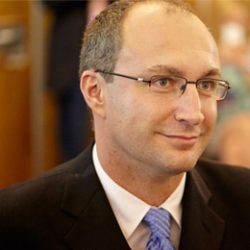Professor Kostya Trachenko

Department: Physics & Astronomy
Institution: Queen Mary University of London
Email: k.trachenko@qmul.ac.uk
Phone:
Website: https://ccmmp.ph.qmul.ac.uk/~kostya/
Research summary
My recent interests included theory of liquid state and glass transition. One of the triumphs of physics has been the theory of solid state developed at the beginning of the last century. This provided a fundamental understanding of the basic properties of solid matter such as the ability to absorb and transfer heat. Solid state theory was preceded by the theory of gases, which was equally successful in many respects. But when we turn to the third main phase of matter, the liquid phase, modern physics remains silent. Paradoxical though it may seem in this age of scientific and technological advancement, we still do not understand the most basic aspects of liquid behaviour. The combination of strong interactions with large atomic rearrangements has proved to be the ultimate obstacle to developing a theory of liquids. This was famously summarized by L. Landau as “liquids do not have a small parameter”. Landau&Lifshitz Statistical Physics textbook states that liquid energy and heat capacity can not be calculated in general form. This has become an accepted view.
I have proposed that contrary to this statement and view, liquid energy and heat capacity can be calculated in general form. The resulting equations have no fitting parameters, and compare well with experimental results.
As a liquid is cooled, it forms glass. A familiar process, glass transition is considered as one of the deepest and most interesting challenges in physics. There are several famous relaxation laws and effects that liquids show in the glass transformation range: the Vogel-Fulcher-Tammann law, stretched-exponential relaxation, dynamic crossovers etc. These phenomena are universal and are seen in other systems as well (e.g. spin glasses). Their physical origin is not understood. This constitutes the problem of glass transition.
I have proposed a solution to the problem of glass transition based on elastic interactions in a liquid. The solution is based on a non-trivial way in which high-frequency elastic waves propagate in a liquid. Crucially, the propagation range of these waves increases with liquid viscosity. This is in contrast to frequently discussed hydrodynamic waves, whose propagation range decreases with viscosity.
Apart from liquids and glass transition, I have studied the phenomenon of resistance to radiation damage and, independently, relaxation effects and pressure response in glasses. This was done using classical and ab-initio MD simulations.
Keywords
Glass Transition, High Pressure, Phase Transitions, Radiation Damage, Glassy Materials, Liquid-State Theory, Radiation Damage, Glassy Materials, Liquid-State Theory
